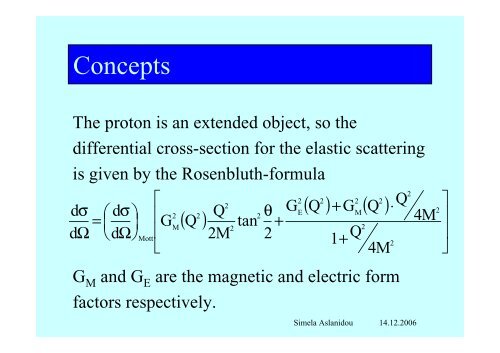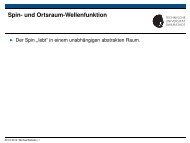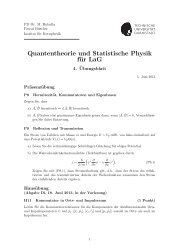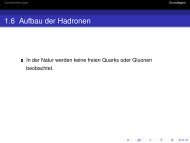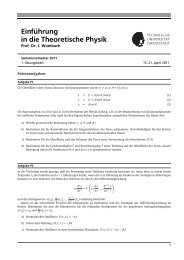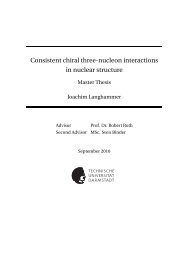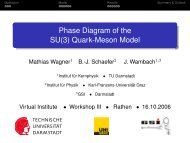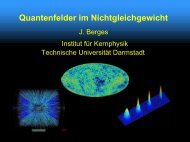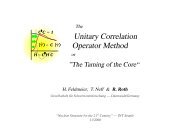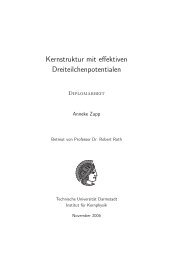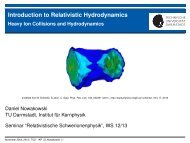History, quark model and the SU(3)-symmetry
History, quark model and the SU(3)-symmetry
History, quark model and the SU(3)-symmetry
You also want an ePaper? Increase the reach of your titles
YUMPU automatically turns print PDFs into web optimized ePapers that Google loves.
Concepts<br />
The proton is an extended object, so <strong>the</strong><br />
differential cross-section for <strong>the</strong> elastic scattering<br />
is given by <strong>the</strong> Rosenbluth-formula<br />
dσ<br />
⎛ dσ<br />
=<br />
⎞<br />
⎜ ⎟<br />
dΩ<br />
⎝dΩ⎠<br />
Mott<br />
⎡<br />
⎢G<br />
⎢<br />
⎣<br />
2<br />
M<br />
( 2<br />
Q )<br />
2<br />
Q<br />
2M<br />
2<br />
tan<br />
θ G<br />
+<br />
2<br />
( 2)<br />
2<br />
+ ( 2<br />
Q G Q )<br />
1+<br />
Q<br />
GM <strong>and</strong> GE are <strong>the</strong> magnetic <strong>and</strong> electric form<br />
factors respectively.<br />
2<br />
2<br />
E<br />
M<br />
⋅<br />
Q<br />
Simela Aslanidou 14.12.2006<br />
2<br />
4M<br />
2<br />
2<br />
4M<br />
2<br />
⎤<br />
⎥<br />
⎥<br />
⎦


